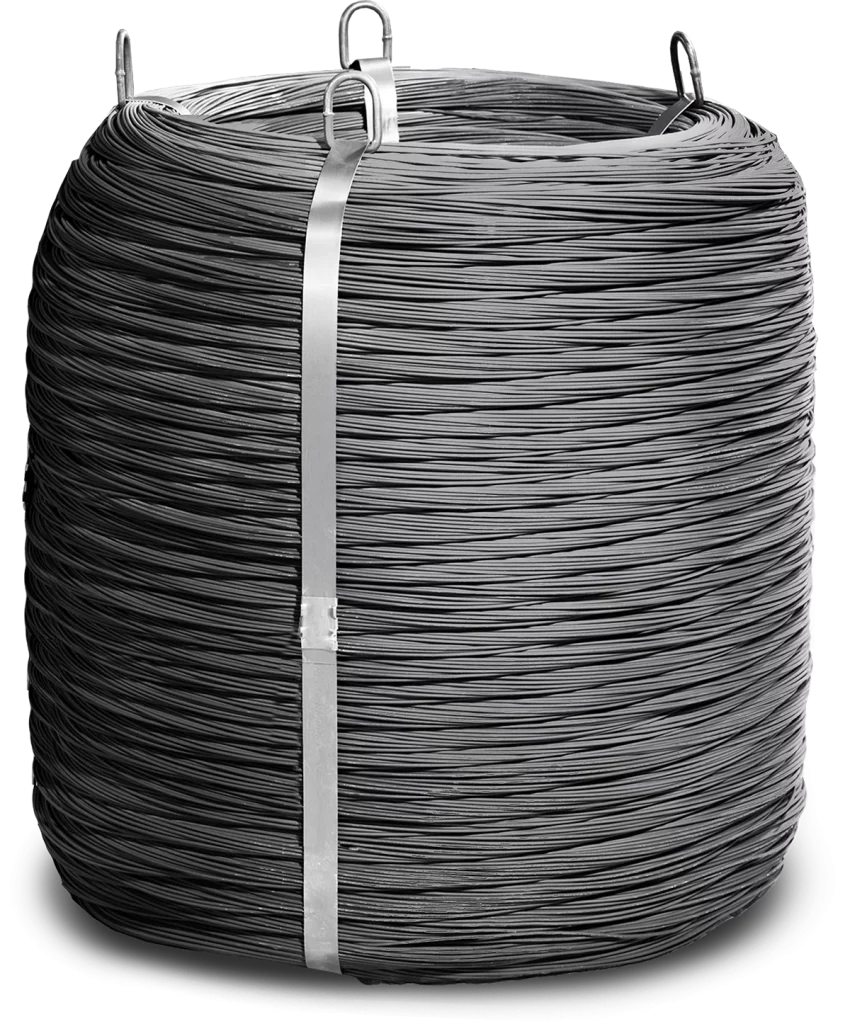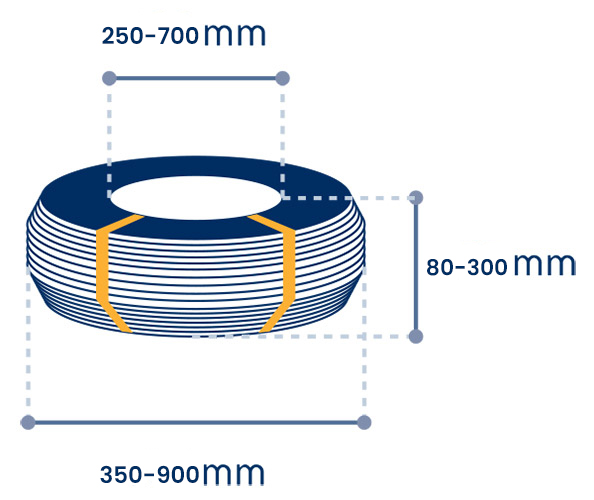Black Annealed Wire
- Foulka
- Black Annealed Wire


Reinforcement is a crucial step in the construction of any structure, and Wire reinforcement plays a vital role in this process
Importance of Reinforcement:
- Strength and stability: Reinforcement makes concrete resistant to tensile and lateral forces, increasing the structural integrity of the building.
- Versatility: The variety of Reinforcement wire types and sizes allows for flexibility in design and execution.
- Wide application: Reinforcement wire is used in various construction projects, including buildings, bridges, and walls.
Properties of Reinforcement Wire:
- High strength: It is made of high-quality steel and has high tensile and bending strength.
- Flexibility: Reinforcement wire can be easily bent and shaped into various forms.
- Weldability: It can be easily welded, creating a strong connection between the Reinforcement.
- Corrosion resistance: Reinforcement wire is coated with a galvanized or epoxy coating to protect it from corrosion and rust.
Types of Reinforcement Wire:
- Black wire: It is made of black wire and is available in various sizes.
- Galvanized wire: Galvanized wire has a galvanized coating that makes it rust-resistant.
- Wire mesh: It is made of steel wire and is used for various applications, such as concrete reinforcement and fencing.
Applications of Reinforcement Wire:
- Holding Reinforcement in place: Reinforcement wire is used to tie Reinforcement together and maintain their arrangement in concrete.
- Building shelves: It can be used to build various shelves, such as those for storing materials and tools.
- Electrode manufacturing: Reinforcement wire is used in the manufacturing of welding electrodes.
- Formwork: It can be used to build formwork for concrete pouring.
- Panel manufacturing: Reinforcement wire is used in the manufacturing of precast concrete panels.
Selecting the Right Reinforcement Wire:
The type and size of Reinforcement wire to be selected depends on various factors, such as the type of structure, the diameter of the rebars, and the environmental conditions. It is recommended to consult with a specialist to choose the appropriate wire.
Annealing Process:
Reinforcement wire is produced by undergoing an annealing or baking process. In this process, the wire rod is heated to a temperature between 750 and 900 degrees Celsius in a special furnace under vacuum conditions. This process continues until the wire’s chemical properties remain unchanged. The wire undergoes physical and mechanical changes that make it softer and more flexible, resulting in a more flexible product compared to the hard wire used in the industry.
Diameter and Thickness:
Reinforcement wire is produced in diameters ranging from 1.2 to 5 millimeters. The diameter and thickness of the wire determine its application, and different types of wires are named based on their intended use due to the variety in diameter and thickness.
Types of Reinforcement Wire:
- Fabricated: This type of wire is produced by drawing 6.5 mm diameter through drawing machines to reduce their diameter to 4.5 mm.
- Strapped: This type of wire is made by cutting steel sheets into strips and then rolling them into coils
Applications of Reinforcement Wire
The most important application of Reinforcement wire is to tie Reinforcement together and create a strong connection between them to maintain their integral structure and the strength of the building. However, this type of wire is not only used in the construction industry, but also in other industries such as agriculture.
In agriculture, this type of wire is used to connect implements during operation.
We mentioned the most important applications of Reinforcement wire, and now we all know how useful and applicable this type of wire is in the construction and agricultural industries, but we cannot ignore the use of this type of wire in sculpture, product packaging, bridge and dam construction.
It is also used in shipbuilding, car manufacturing, and the manufacture of electrodes, mesh, screws, various shelves, nails, rivets, nets and formwork.
There are other uses for Reinforcement wire as well. This wire is used to make bird and animal cages, to fasten and reinforce skeleton joints, and to make furniture and home decorations.
If you remember, we said that rebar wire is produced in different thicknesses and diameters, each of which has different applications. In the following, we will get acquainted with wires with different thicknesses and their applications.
Wires with a thickness of 1.5 mm are the best option for reinforcement and are usually packed and offered in 30 kg coils to be available to buyers. These wires are very popular and useful.
Black wire or rebar wire, if it has a thickness of 2.5 mm, can be used in formwork.
3 mm thick black wires are also the best option for use in the woodworking industry.
The thickest Reinforcement wire, which is 4 mm, is often used for packaging.
Technical specifications
|
Wire diameter
|
0,5 – 5,00 mm
|
|---|---|
|
Internal diameter
|
250 mm - 700mm (+/- 30 mm)
|
|
Outer diameter
|
350 mm -900 mm (+/- 30 mm)
|
|
Weight
|
10 Kg - 300 Kg
|
